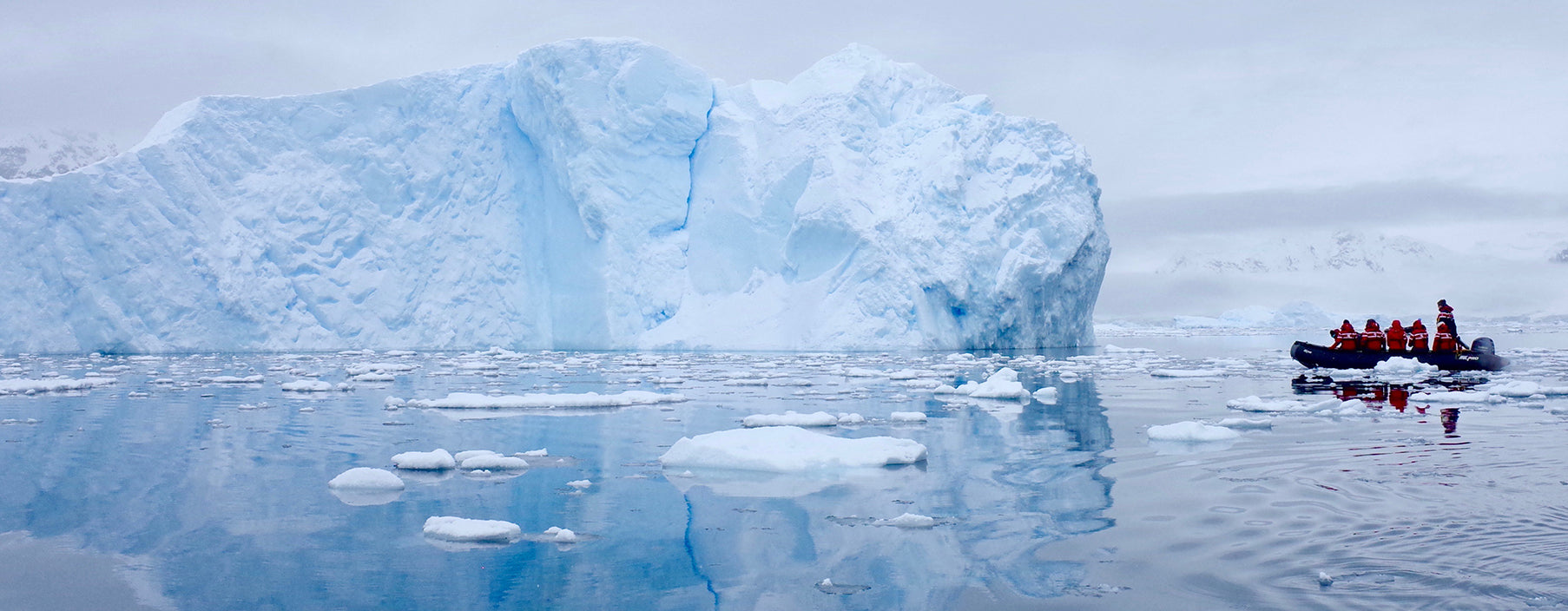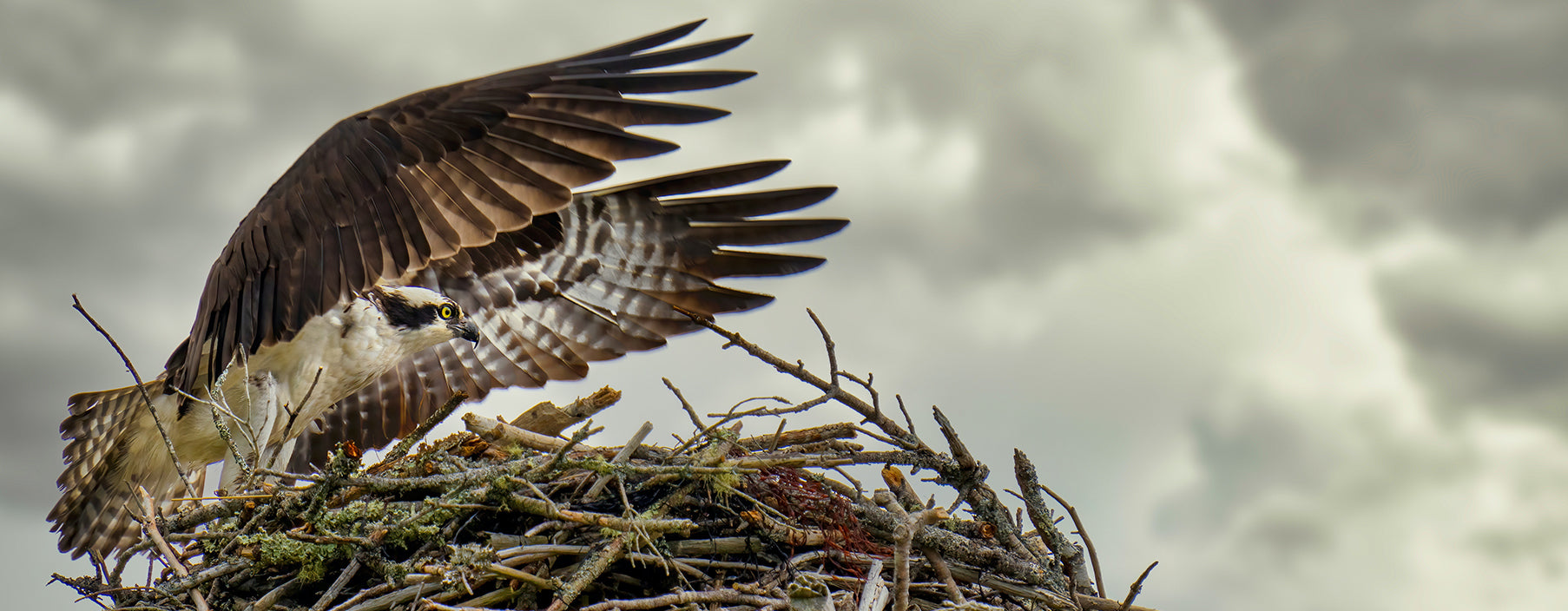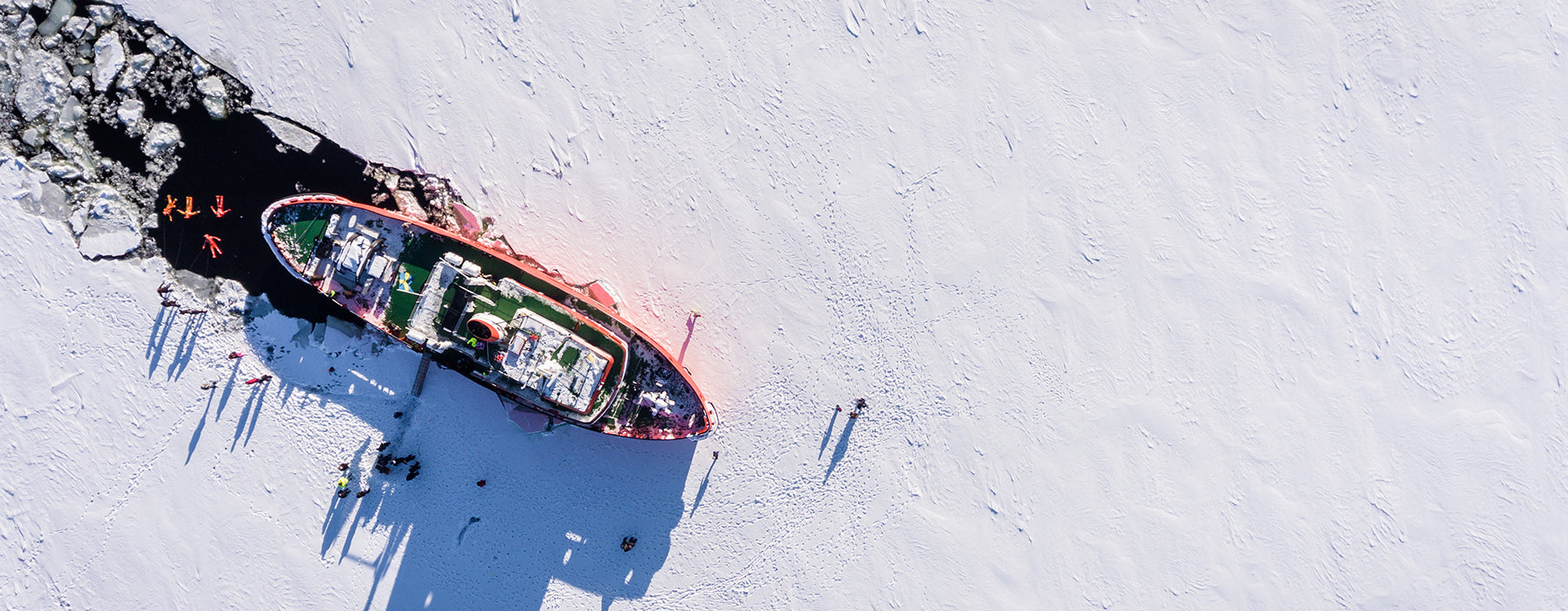
A CONTINENT OUT OF TIME // MAX LEONARD ON ANTARCTICA
Max Leonard is a Shackleton fan, a writer and author. He has written books about mountains, bunkers and cycling, among other things, and his next book, to be published later this year, is about ice. In May 2020 he won a trip to Antarctica via a Shackleton Instagram competition celebrating our partnership with cruise company Polar Latitudes, for whom we produce expedition jackets. After three years’ delay, he finally set sail. Here are some impressions. . .
At 03h45 on 19 January 2023, as our ship, the MS Seaventure, sailed south from Ushuaia at the tip of Tierra del Fuego, we spotted our first iceberg. Or rather, the ship’s ice pilot did from the bridge; we were tucked up in our cabins enjoying a calm night’s sleep after a rough crossing of the Drake Passage, the thousand-kilometre stretch of the Southern Ocean that separates South America from the Antarctic Peninsula. It’s the shortest route to the continent, but one beset by storms and swells: with no land at these latitudes at all, the winds can really blow and the waves’ fetch is infinite. Only the next morning, when we awoke with the Antarctic mainland visible to port, we realised that we were in a world transformed, did we see icebergs for the first time ourselves.
Almost exactly 101 years earlier, Ernest Shackleton experienced the same thing: “At 1 P.M. we passed our first berg,” he wrote in his diary on 2 January 1922. “The old familiar sight aroused in me memories that the strenuous years have deadened. Blue caverns shone with sky glow snatched from heaven itself.”

Shackleton was steaming south on the Quest (on a voyage he would not return from), and was by this point a veteran of these high latitudes, and yet he still had the capacity to marvel at the ice. As for us, its variety of shapes, forms, textures and colour, not to mention the sheer quantity of the stuff, would surprise and delight for all the days we were visiting this enchanted place.

Blue caverns shone with sky glow snatched from heaven; icebergs are blue because the glacier ice from which they are formed has been compressed over the course of many years, squeezing out the air bubbles that cloud younger ice. Very old (thousands of years) ice is completely transparent. Some of this we endeavoured each day to scoop out of the inky Southern Ocean, to be served behind the bar with cocktails or indeed, if like Shackleton that’s your thing, Scotch whisky.

Sometimes – when watching humpback whales gorging on krill only 50 metres away, or standing among chinstrap penguins raucously going about their business in one of their rank-smelling colonies – Antarctica felt like a continent out of time. We were spying on a place that humanity had not touched. Elsewhere it seemed only too grimly tied to history: giant bones, rusted metal, collapsing buildings, remnants of the apocalyptically destructive whaling industry of the early twentieth century, are only too visible on some of its shores.


Thankfully the whale populations have rebounded, and we saw plenty each day, from the ship and from the Zodiacs and on our excursions to dry land. One of my enduring memories will be of floating on a mirror-still sea with our inflatable’s outboard switched off, watching a whale surfacing in the brash ice and hearing it blow while a glacier calved in the distance and the snow pattered softly on my jacket.
 Another is of the ship passing through the narrow Neumayer Channel. The clouds drew in, hiding the majestic glaciers and mountains that flanked us on both sides from view, until we were floating through a thick luminescent fog; then they receded again, the light shifting subtly, its soft tones becoming stronger and brighter until the sun broke through, dazzling on the white slopes above the black still water.
Another is of the ship passing through the narrow Neumayer Channel. The clouds drew in, hiding the majestic glaciers and mountains that flanked us on both sides from view, until we were floating through a thick luminescent fog; then they receded again, the light shifting subtly, its soft tones becoming stronger and brighter until the sun broke through, dazzling on the white slopes above the black still water.

We were 210 (including 90 crew) people from 26 different countries on the ship, in what is promising to be a bumper season for Antarctic travel. A record 100,000 tourists are forecast to be down there during the austral summer of 2022-23, which is why citizen science programmes like the one offered on board the Seaventure are becoming increasingly important. Even in the summer season there are perhaps only 3000 scientists across the whole of Antarctica, and to put a dedicated ship into these waters is extremely expensive. Our expedition offered activities including checking cloud formations, bird surveys, photographing and uploading pictures of whales, and helping with phytoplankton sampling. Multiply this across the many tourist vessels in the region and you can see how it might make a difference.

All too soon we had to head north once again, but not before stopping in the South Shetlands at Deception Island, a former whaling station in the caldera of an active volcano, which simmered gently while we walked its black sands and a few brave souls took a polar plunge. Then we were back into the boisterous waters of the Drake, albatrosses slipstreaming in the ship’s wake and the dancing white horses atop the waves sparkling in the sun.
Polar travel now, unlike in Shackleton’s time, can be luxurious and almost 100 per cent safe. But there is no less of a sense of wonder, nor of privilege, and the words of Rudmose Brown, botanist on the 1902-4 Scotia expedition still ring true: “There is, I feel sure, no region in the world more grand in its scenery than the Antarctic, and no place more transcendent in its beauty. It is a vast wonderland laid out on a giant scale, in which littleness has no place; but its very vastness, no less than its beauty, while it quickens the traveller’s daily wonder and deepens his reverence, forces him to feel that it is a world he can never conquer, a world in which the forces of nature are too tremendous to overcome, and must resignedly be bowed before in the hope that they will suffer him to come and pass again unscathed.”


